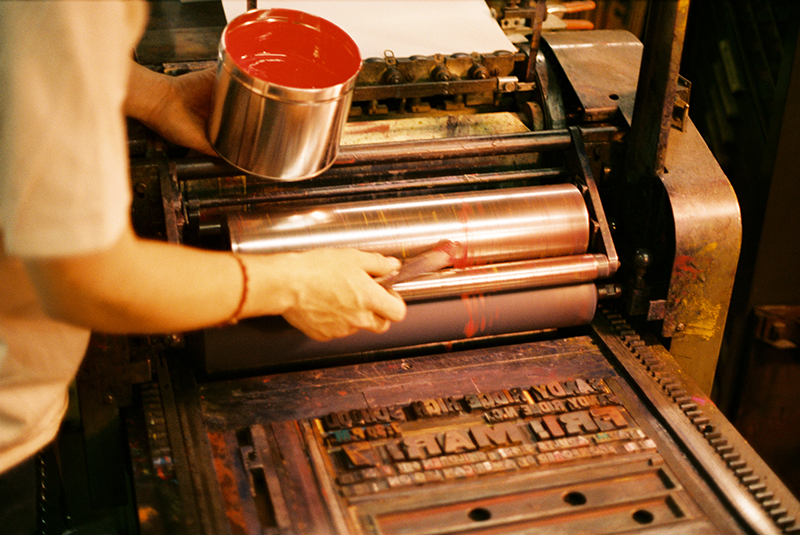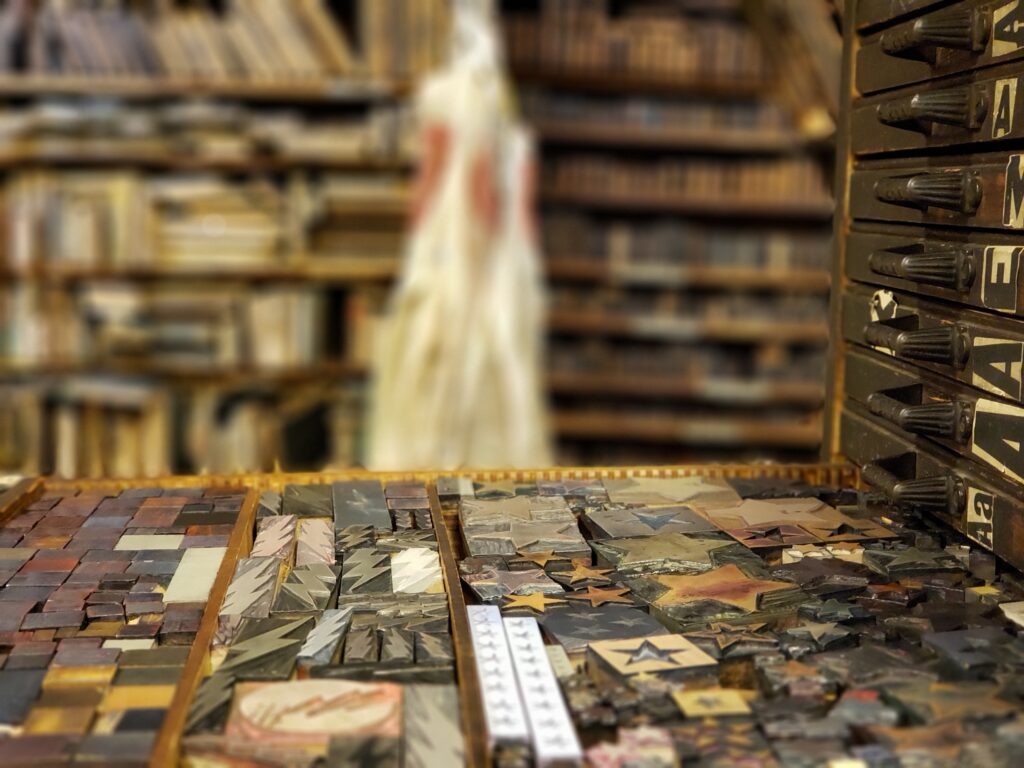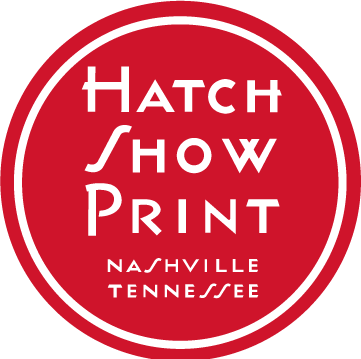

What is Letterpress?

The most frequently asked question at the Hatch Show Print counter—just ahead of inquiries about whether or not visitors are permitted to pet the beloved shop cat, Maow—is, of course, What is letterpress printing?
Letterpress printing is a process in which raised, inked surfaces—usually made of wood, metal, or linoleum—are pressed onto paper. This practice is essentially the same method of relief printing that was invented in the fifteenth century by Johannes Gutenberg, using movable type, hand-carved blocks, and hand-cranked printing presses.


Designs carved on wood blocks combine with movable letters of wood or metal. These elements are positioned backwards, and locked into a frame, or “chase,” secured in a printing press, and inked. The paper is pressed onto the inked type to obtain an impression that is right-reading. Posters with more than one color require separate assemblages, or “forms,” for each color. Each application of additional color requires a new pass of the paper through the press.


Today, Hatch Show Print creates posters the same way they were produced over a century ago. Since setting up shop in 1879, it has also become one of the oldest operating letterpress print shops in the United States. Producing over 600 poster jobs each year—many of them for country performers, totaling roughly 250,000 posters printed on ten presses—the shop is one of the more prolific letterpress print shops, still using its extensive archive of vintage wood type and carved wood and linoleum blocks. After five generations of near-constant use by designers and printers producing posters, Hatch Show Print has become a bona fide analog institution, surviving and thriving into the digital age.
